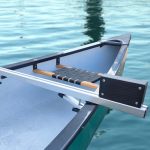How much is a canoe nowadays? This article explores the price of a canoe and reflects on the need to buy the most expensive one.
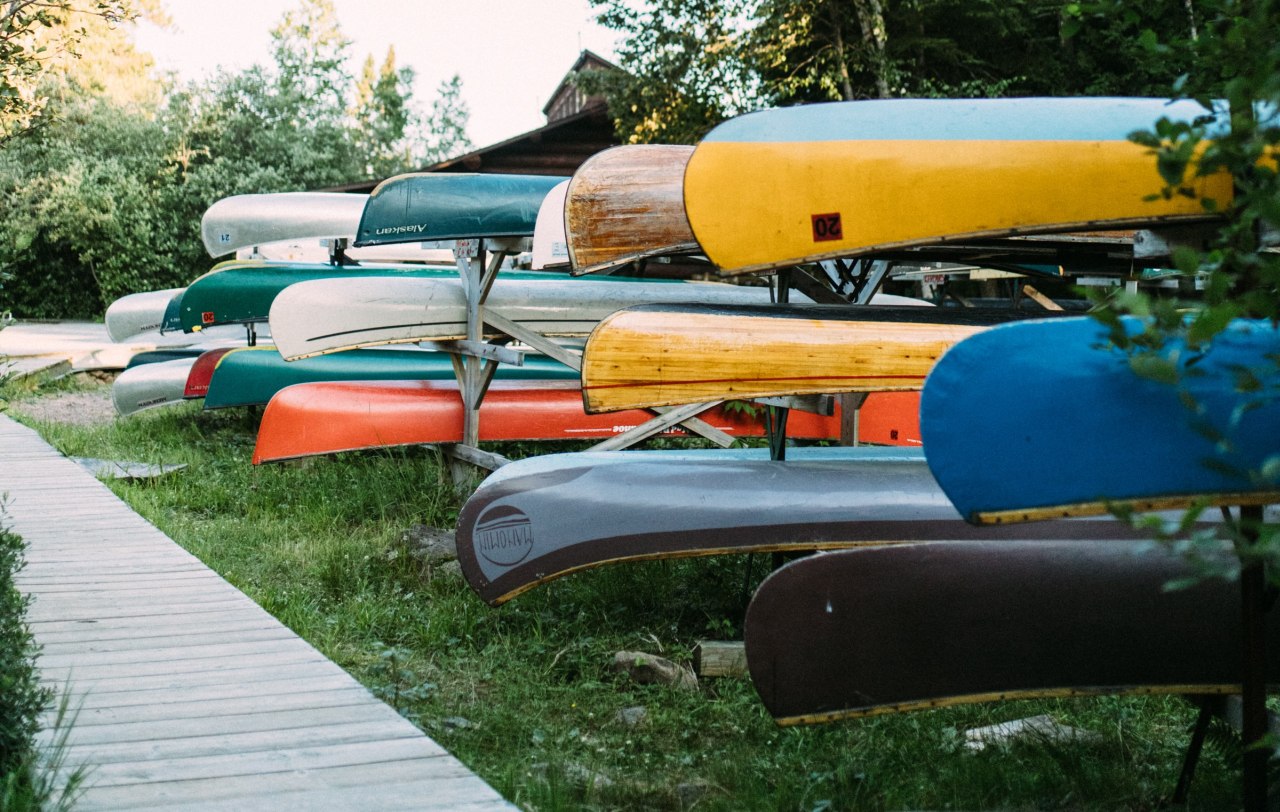
If taken good care of, a canoe will last years, even decades. But improper storage can damage your canoe even before you take it out on the water. Our canoe storage guide will help you make sure your canoe stays as good as new for as long as possible.
When you’ve spent your hard-earned money buying your perfect canoe, the last thing you want is to take it out on the water and find that it’s not in pristine condition like it was when you put it away.
Whether it’s damage to the hull, worn or warped gunwales, or a family of squirrels that have moved in and gnawed through your airbags, there are plenty of ways that your canoe can get damaged off the water.
Let’s talk about why canoe storage is important and how to do it properly.
Why Does Canoe Storage Matter?
Before we look at how to store a canoe, let’s look at what we’re protecting your canoe against.
Protect Your Canoe From Damage
The hull is the largest component of your canoe, and improper storage can warp your hull easily. It’s not common that poor storage would pierce your hull, but if you were to keep weight in the canoe, it is possible.
As unlikely as it sounds for a craft designed to go in the water, you must also protect your canoe from water damage while in storage. Any water left in the canoe can damage the hull over time but is more likely to damage seats and rust bolts.
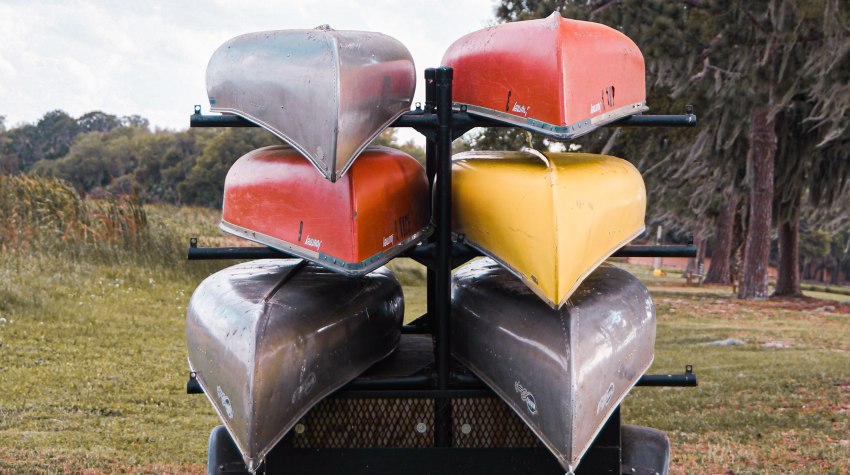
Protect Your Canoe against UV
One of the main elements that weaken plastic is UV damage. Even ABS plastic boats are susceptible to UV damage if they’re stored in direct sunlight, and this can cause your canoe to be more likely to split or crack on the water.
Protect Your Canoe against Animals
Animals always seek somewhere to nest, especially during winter. There are few better places than underneath a canoe to protect them from the wind and rain.
A nesting animal inside your canoe will not only make a mess but are likely to damage components and even the hull.
Animals routinely scratch, or try to burrow, and over time this can impact even the hardest plastics. They’re also likely to gnaw at anything soft, bring in moisture and leave behind droppings.
Protect Your Canoe against Theft
At around fifteen feet long, canoes aren’t necessarily the easiest thing to steal. And they’re not usually targeted by thieves, either.
But in the same way as you would use a canoe lock when transporting your canoe, you should always make sure you secure your canoe while it’s stored at home.
This prevents any would-be thieves or anyone who fancies themselves as impromptu canoeists, from taking your pride and joy for themselves.
Additionally, ensure your canoe is covered under your insurance, or independently insured, and take photos of the serial number, just in case.
How To Store Your Canoe
Now that we know why we’re storing our canoes, it’s time to look at how we store them. However, if you plan to store your canoe, ensure you have enough space for it.
A canoe stored in the garage is excellent, but if space is tight and you risk crashing into it with your truck, it’s worth finding alternative storage.
Similarly, you should avoid storing your canoe anywhere it might end up being used for putting things on, or someone might see it as a good resting point.
Storing your Canoe on Racks
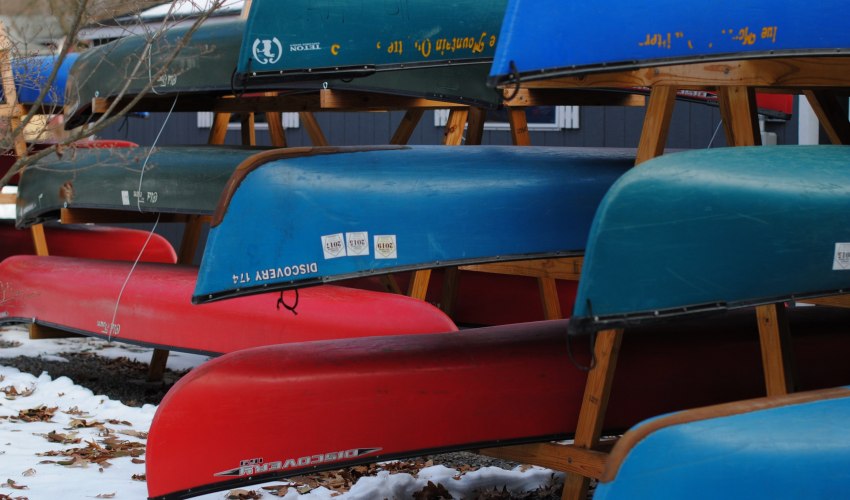
There are two main styles of canoe storage racks; wall mounted racks and free-standing racks.
Wall-mounted racking is the best choice if you can fit it. By attaching it firmly to the wall, you reduce the risk of your canoes coming crashing down.
Free-standing racking will have to be more substantial than wall-mounted. The advantage of a free-standing racking system is that you can move it more easily if you store your canoes in different places throughout the year.
Both styles of racking should follow these two rules, though. Keep your canoe stored face-down on its gunwales, and make sure your racking is the right distance apart.
Storing your canoe on its gunwales is the best way to reduce strain across the important parts of the boat. We’ll look at why you shouldn’t store your canoes upright or on their sides, but for now, remember to store your canoe gunwale down.
Your canoe racking should be positioned a third of the way in from the end of your canoe, which would also position them around a third of the canoe apart from one another. This spreads the load evenly and prevents the likelihood that your canoe will warp in storage.
Top tip for canoe racking: use rubber or carpet to cover the arms of your canoe rack. This will protect your canoe gunwales from getting scratched, especially if you use metal racking.
Suspend Your Canoe
A popular way to store your canoe is to suspend it from the roof using a pulley system. Not only is this a secure storage method, but it keeps your canoe well out of the way.
Suspending a canoe is particularly popular throughout winter, or with infrequent paddlers.
In order to store a canoe by suspending it, you need to make yourself a secure system. Using webbing straps, you can create strops that distribute the weight of your canoe evenly along the hull. The wider your webbing, the better the weight will be distributed and the less likely you are to damage your canoe.
These strops should then be attached securely to a strong rope that can run through a pulley system and down to a point on the ground. Most people choose to have two separate systems and to raise and lower their canoe in pairs, to reduce the strain.
Storing a canoe up high means that there is a risk of damage were the system to fail, so we only recommend suspending your canoe if you’re confident with the system you have made.
Storing Your Canoe Using Blocks
The most simple method and one that can also be used in place of a roof rack on a vehicle is using foam blocks.
By cutting blocks of closed-cell foam, you can create a lightweight, low-profile racking system that raises your canoe off the ground and spreads the weight.
Make sure your foam is deep enough that the ends of your canoe are clear of the ground, and that they are secure where they sit.
The advantage to foam blocks is that they’re cheap, they’re easy to move around, and while your canoe isn’t stored on them, you can move them aside and use the space for other things.
Things to Avoid When Storing a Canoe
Storing Your Canoe on the Ground
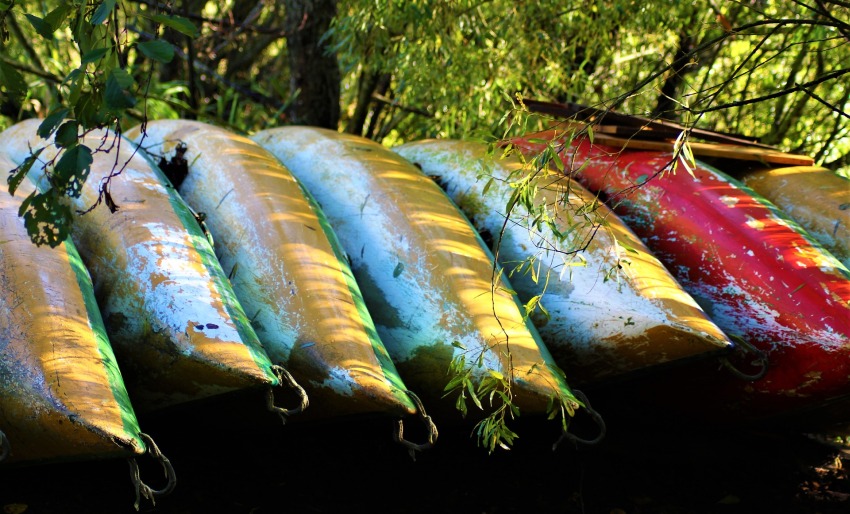
It can be tempting to store your canoe on the ground. After all, it calls for the least equipment, and at the end of a long day of canoeing, all you want to do is throw your canoe on its side against a wall and hit the sofa.
But storing a canoe on the ground, especially long term, will warp the hull and increase the likelihood that creatures and moisture get into the woodwork, airbags, and the bolts that hold it all together.
Storing your Canoe Upright
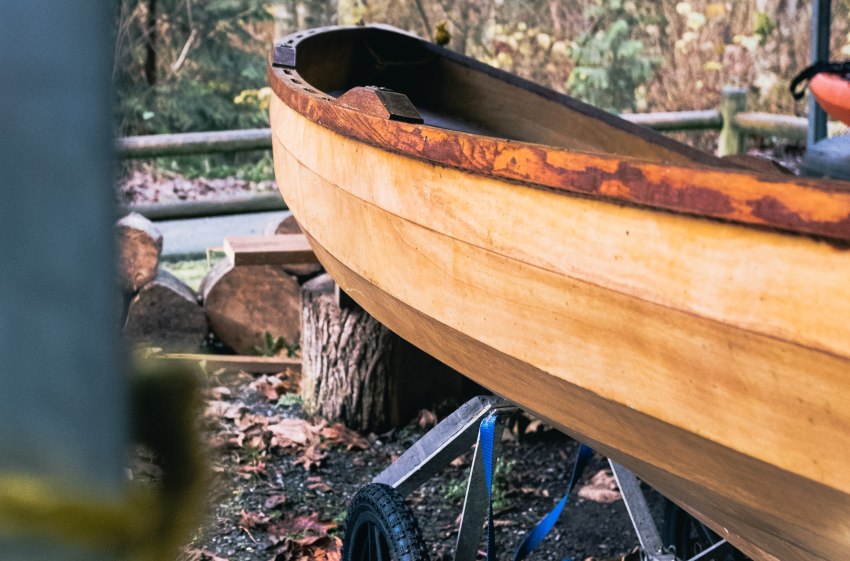
Storing your canoe upright — in the same way as it would sit on the water — will warp the hull, no matter what style of storage you use. The only exception here is when you suspend your canoe, where if you make wide enough strops you can spread the load enough to limit the strain.
A canoe stored upright on a racking system will put undue strain on the ends of your boat. The hull has more flex than the gunwales, which means it’s more susceptible to changing shape while it’s stored on a rack, but won’t always change back.
If you store your canoe upright on the ground you will flatten out the hull, especially if it fills with water.
Storing Your Canoe on Its Side
While kayaks can be stored safely on their sides, canoes stored on their sides will warp and change shape, as well as putting excess strain on the woodwork.
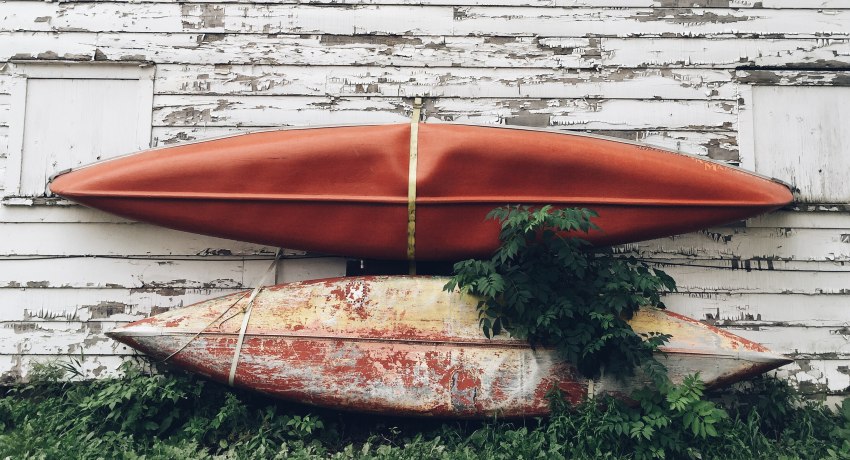
The thwarts and seats that are integral for your canoe holding its shape will be pushed out of line if you store your canoe on its side. If these are affected then you will lose the rigidity and performance of your canoe.
There is also the chance that by storing your canoe on its side, you will warp the hull, flattening out one side of the boat and reducing its performance.
Storing Your Canoe On End
This isn’t a common storage method, but if you have the height in your garage it can be tempting to store your canoe on its end to limit how much space it takes up.
After all, we often store kayaks this way with no long-term effects.
But storing a canoe in this way is going to put all the weight of that fifteen-foot boat through the end. This amount of weight on the end is going to damage the boat over time and even if it doesn’t show a noticeable change, it will increase the likelihood of long-term damage.
The other issue with on-end storage is that unless you properly secure the boat, there’s the chance of the boat falling and breaking.
How to Store a Canoe Outside: Useful Tips
Not everyone has the space to store their canoe indoors. Most people find that they have to store their canoe in their yard, or along their driveway. The same dos and don’t still apply for outside storage, but there are a few extra things that can make a difference to the longevity of your canoe.
Keep your Canoe out of Direct Sunlight
UV damage will quickly affect the integrity of the plastic of your canoe. When you’re storing your canoe outside, you need to create a cover to keep the sunlight at bay.
The best way to do this is with a canoe cover. Like a kayak cover, these go over your whole canoe and zip closed to protect it. You should still then store your canoe on a rack or on blocks.
Alternatively, you can use a tarp to create a shelter for your canoe. If you have a full rack, you can easily build a tarp into being part of this and secure it down to prevent it from getting damaged in the wind and rain.
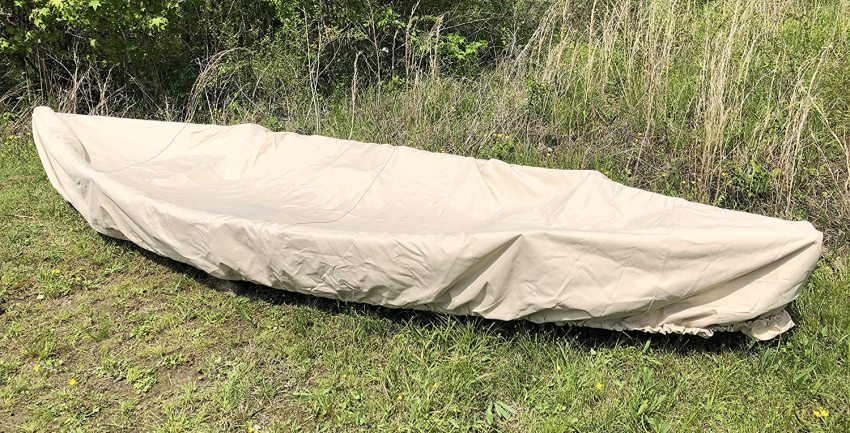
Keep your Canoe Dry
Keeping your canoe dry is far more difficult when you’re storing it outside. When you finish your trip you should allow your canoe to fully dry before you put it in storage.
You can use the same methods that you used to keep your canoe out of direct sunlight to keep your canoe dry. If you’re going to rely on a canoe cover, make sure it’s a waterproof model and not just a UV protective cover.
Tarps are the most popular choice for keeping your canoe dry as you can create an easy and reliable shelter.
If you’re storing your canoe outside, it’s even more important to keep it gunwales-down.
Unless your shelter is 100% waterproof, you risk the ingress of a little moisture. If your canoe is stored on its gunwales, this shouldn’t be an issue and will dry out, but stored upright this water can pool and stagnate in the bottom of your canoe.
Lock Up Your Canoe
If you store your canoe in your garage, then you can rely on it being relatively secure. But outdoors, you need to lock your canoe to a secure point to keep it safe.
You can either use a canoe lock or use a chain or bike lock to secure your canoe.
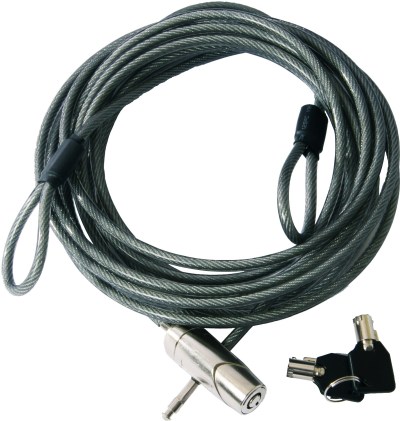
You should lock your canoe to a secure point, like a tree or a solid structure. You should also make sure the lock goes through a secure point of the canoe itself. Attaching through rope is not secure, with seats or handles a better choice.
Storing Your Canoe For Winter
Long-term canoe storage is a little different. Before you put your canoe away for winter, or for a few months of non-use, there are a few steps to follow.
Clean down and fully dry your canoe. Any moisture in the boat itself is going to damage woodwork, bolts, and any softer fittings over time. If the moisture freezes over winter it can split wood and cause even more damage.
Check and oil any woodwork, including gunwales if you have wooden gunwales. This is a good time to do this because it gives the woodwork plenty of time to thoroughly dry and take on the oil while the canoe is in storage.
Check all the bolts, ropes, airbags, and any other components. Your canoe takes on damage over the season and we often put off repairs until a later date. Now is your time.
By spending a few hours checking your canoe over for wear and tear and fixing it up, you save yourself time in the summer when you just want to get yourself back on the water.


